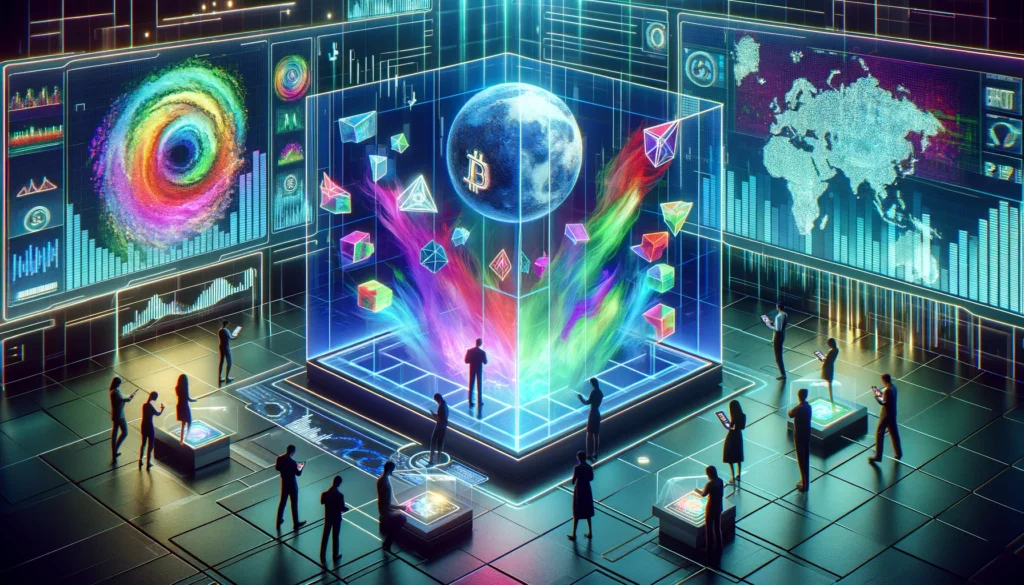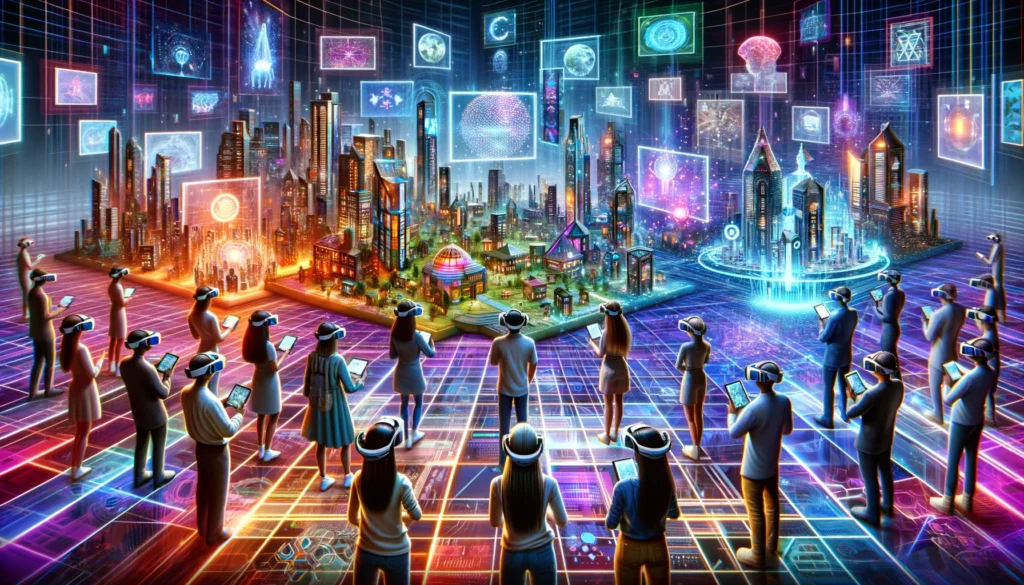Metaverse is a rapidly growing realm where virtual reality, blockchain technology, and digital assets are coming together to redefine the concept of property and ownership.
Several platforms are leading the way in developing the Metaverse, including Decentraland, The Sandbox, and Cryptovoxels. These platforms use blockchain technology to ensure security and authenticity, providing users with an enhanced virtual world experience.
The Metaverse is not just a platform for social interaction but is also becoming a significant economic space. Users can create, buy, and sell digital assets, including virtual real estate, clothing for avatars, and art. Virtual events such as concerts and conferences are also gaining popularity, showcasing the diverse potential of the Metaverse.
What is Virtual Real Estate
Virtual Real Estate refers to parcels of land in the digital world, particularly within the Metaverse. Unlike physical real estate, these digital assets exist entirely in virtual environments. They possess unique characteristics like scarcity, customization capabilities, and utility within the digital ecosystem.
While geographical constraints and physicality limit physical real estate, virtual real estate transcends these limits, offering endless possibilities for creativity and development. However, similar to the physical world, location and popularity of the virtual world play crucial roles in determining the value of virtual properties.
Examples of Virtual Real Estate Platforms
Platforms like Decentraland and The Sandbox have emerged as leading spaces for virtual real estate. These platforms allow users to buy, sell, and develop land, creating experiences ranging from games to virtual social hubs. Each platform has unique features and communities, shaping the value and use of the virtual land within them.
Introduction to NFTs
NFTs, or Non-Fungible Tokens, represent a unique, digital certificate of ownership for a specific item or asset. Unlike cryptocurrencies, which are fungible and can be exchanged on a one-to-one basis, each NFT is unique and cannot be replicated. This uniqueness is what gives NFTs their value.
In the Metaverse and virtual real estate context, NFTs serve as proof of ownership for digital assets. When you purchase a virtual property, an NFT is minted to represent your ownership of that specific piece of land or asset, verifiable on the blockchain.
Differences Between NFTs and Traditional Digital Assets
Traditional digital assets, like downloadable content in video games, are often restricted to use within a specific platform and are not owned by the user. On the other hand, NFTs grant true ownership to the buyer, allowing them to trade, sell, or use their assets across different platforms, assuming interoperability between them.
Investing in Virtual Real Estate

Purchasing virtual real estate usually involves selecting a plot on a specific platform, bidding or buying through a marketplace, and completing the transaction with cryptocurrency. It’s crucial to have a digital wallet compatible with the platform and the currency used.
Factors to consider when investing:
- The popularity and potential growth of the platform.
- Location of the land within the virtual world.
- The community surrounding it.
Like in the physical world, location plays a significant role in the value of virtual real estate.
Risks and Rewards of Virtual Real Estate Investment
While virtual real estate presents opportunities for high returns, especially as the Metaverse grows, it also carries risks. These include market volatility, platform stability, and technological changes. Investors should approach virtual real estate with the same caution and due diligence as any other investment.
How NFTs are Changing Property Ownership
In the Metaverse, NFTs are revolutionizing the concept of ownership. They allow for the secure and indisputable possession of digital assets. This shift represents a new era in how digital assets are viewed, valued, and traded.
Legal Considerations and Property Rights
While the Metaverse offers unprecedented opportunities, it also poses new legal challenges. Issues surrounding intellectual property, jurisdiction, and enforceability of digital ownership are still being navigated. Investors must stay informed about the evolving legal landscape of virtual property.
Real-world Examples of NFT-based Property Transactions
Examples like virtual land sales in Decentraland or art auctions in NFT marketplaces illustrate these digital assets’ real-world impact and financial potential. These cases highlight the growing interest and investment in the Metaverse’s virtual real estate.
The Future of Virtual Real Estate and NFTs
The integration of augmented reality, further development of virtual worlds, and increasing interest from mainstream companies are trends shaping the future of virtual real estate. The growing acceptance of NFTs will likely legitimize and expand the market.
As the Metaverse grows, its potential to become a significant part of the global economy increases. Virtual real estate could influence everything from advertising and retail to social interactions and entertainment, presenting new economic opportunities.
Conclusion
Virtual Real Estate and NFTs in the Metaverse represent a frontier in the digital economy, blending creativity, technology, and investment in unprecedented ways. For newcomers, understanding this landscape is not just about grasping new investment opportunities—it’s about being part of a paradigm shift in how we interact with and value digital spaces and assets.

